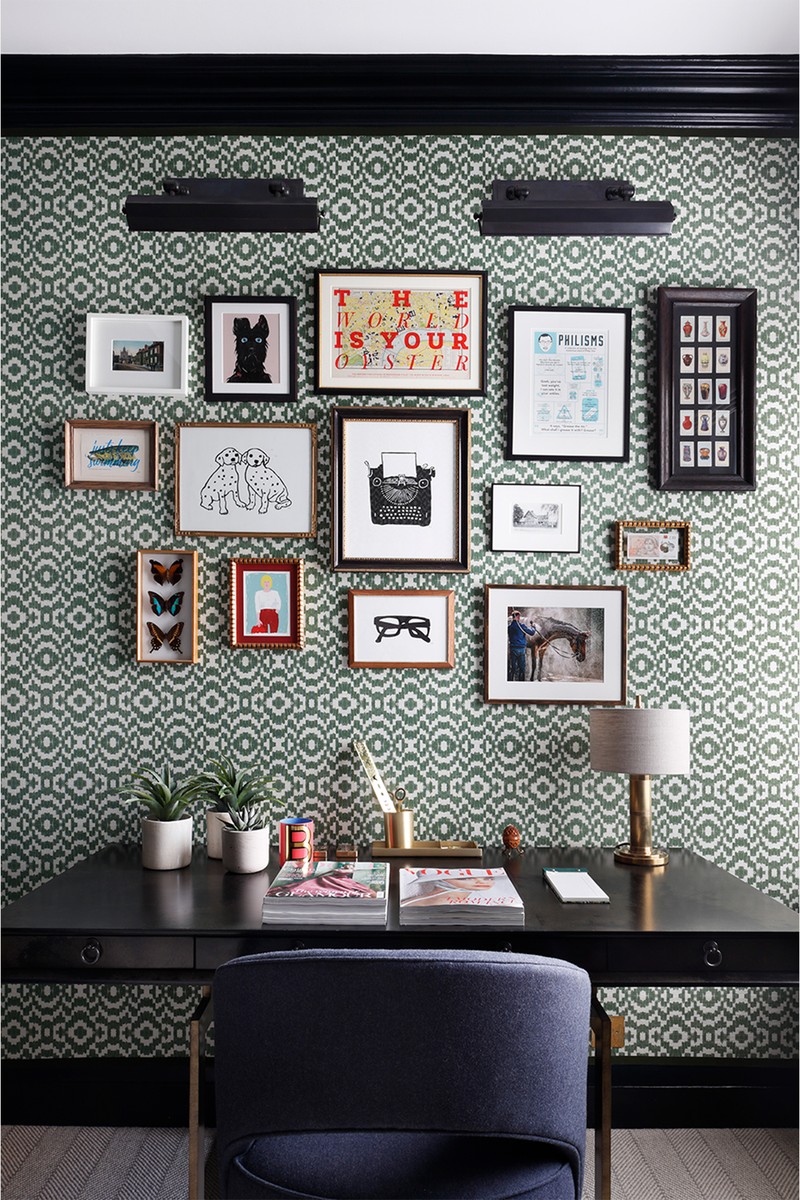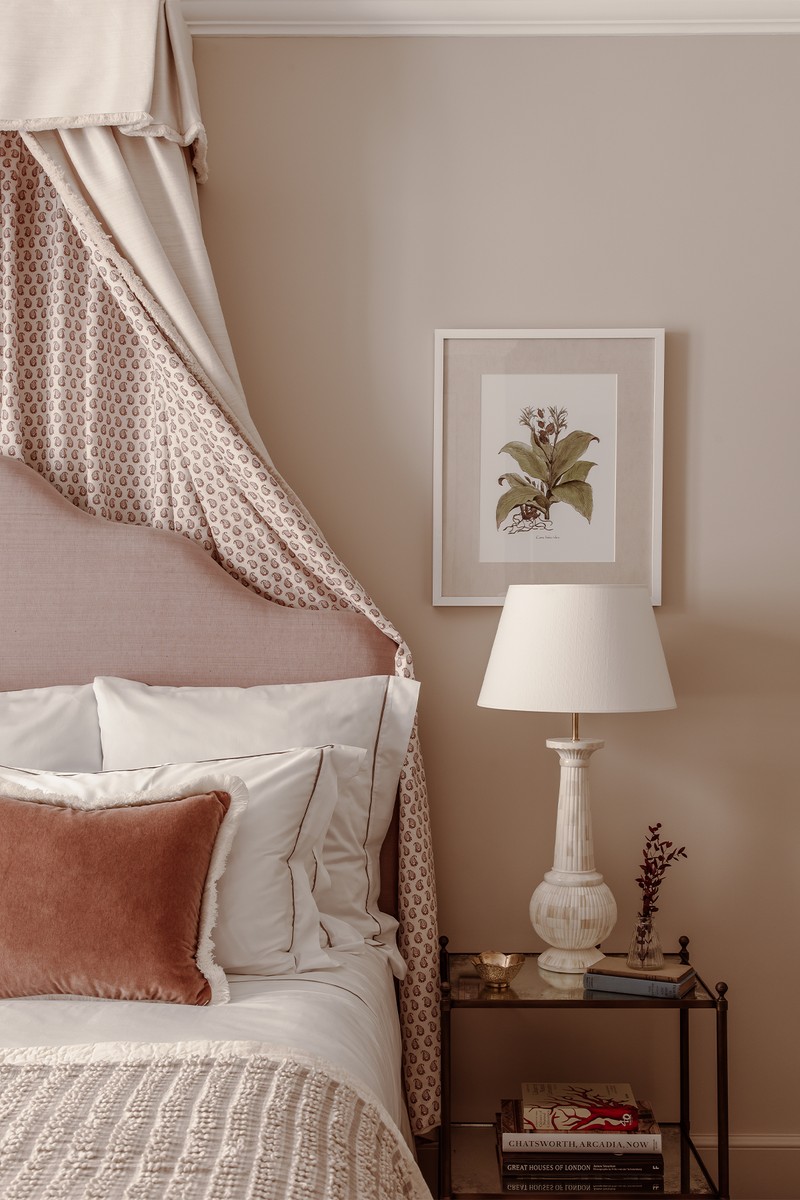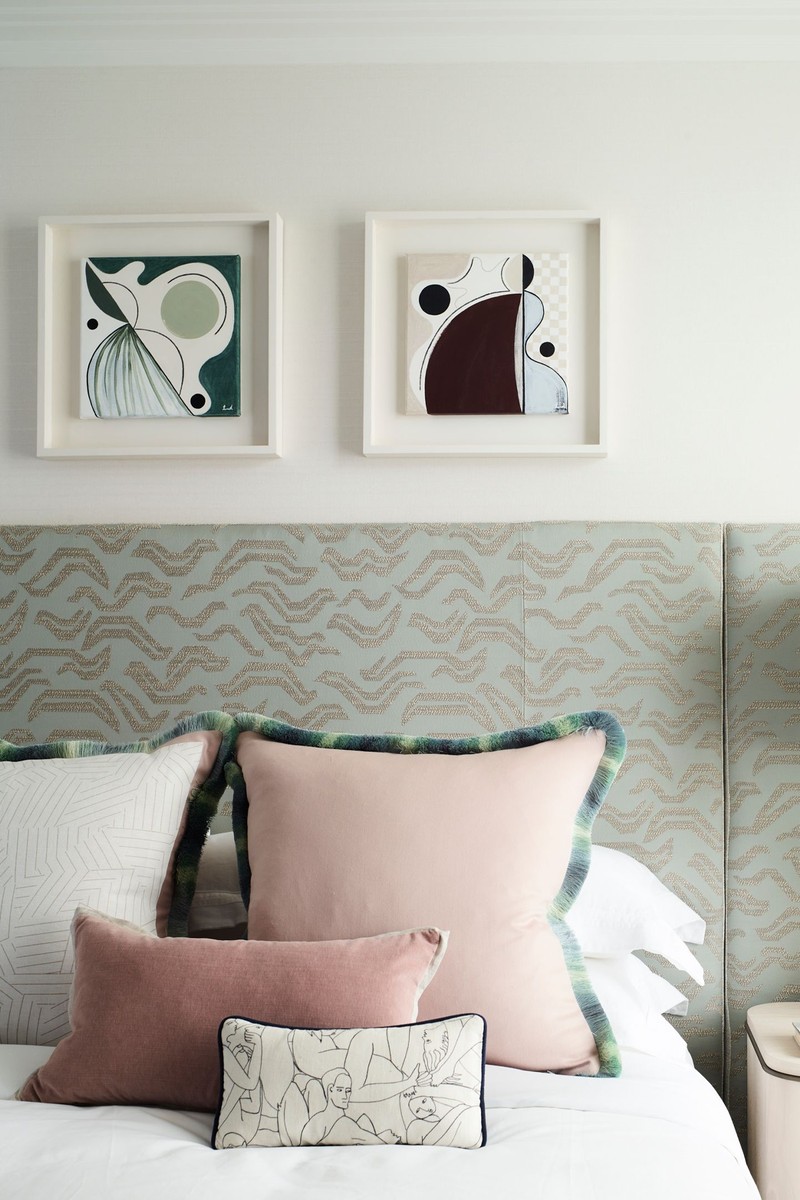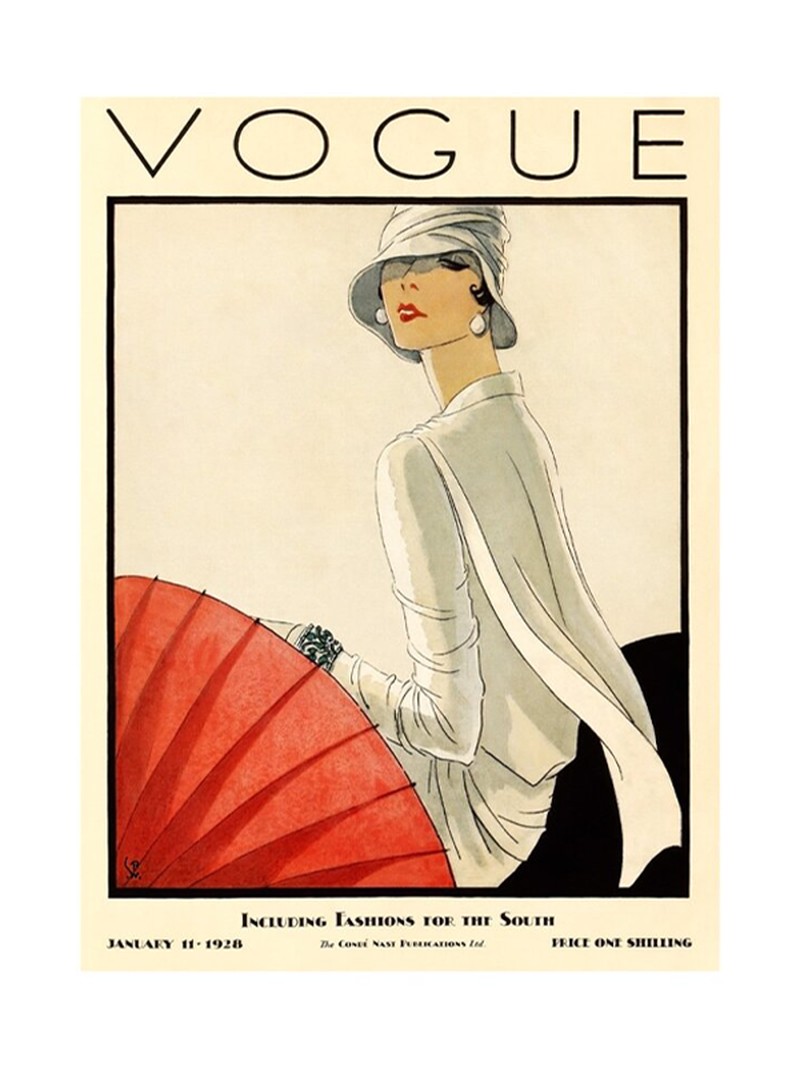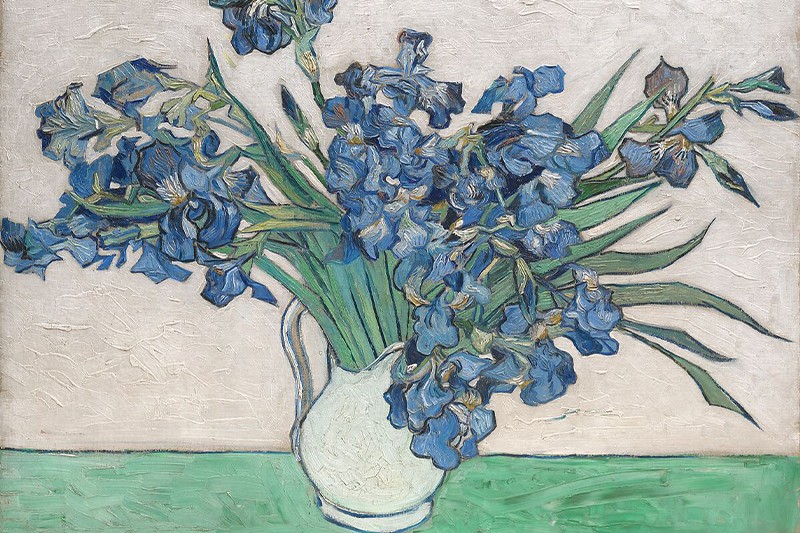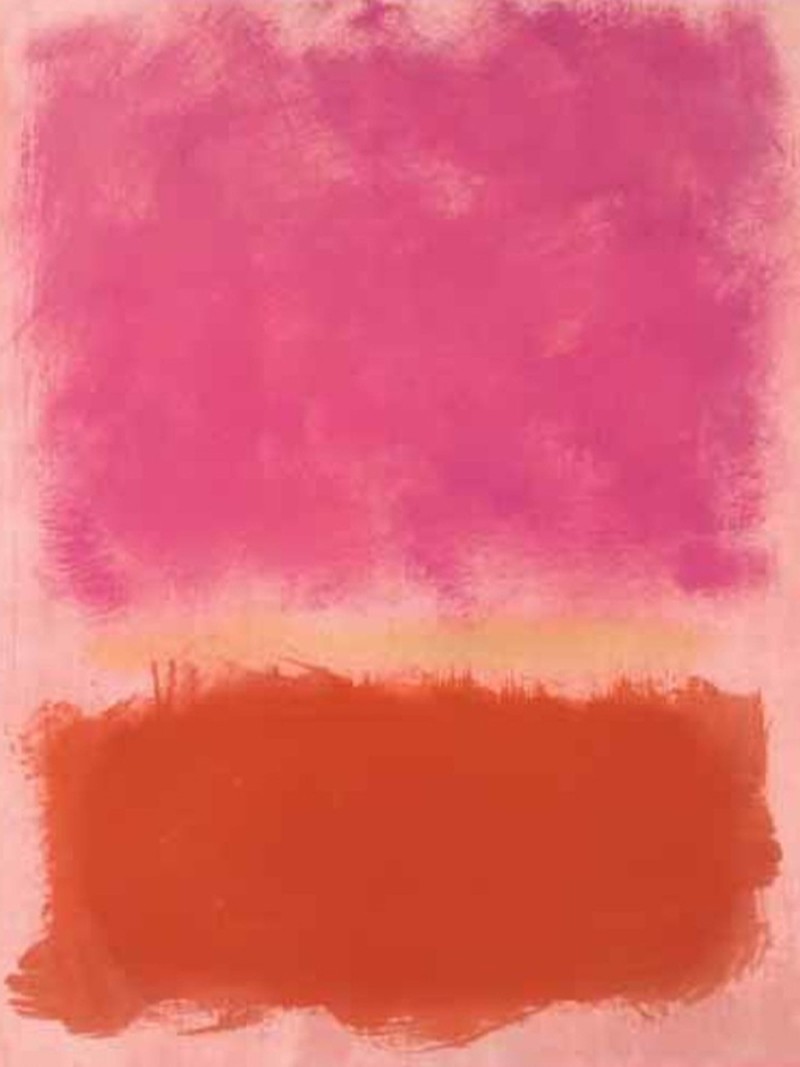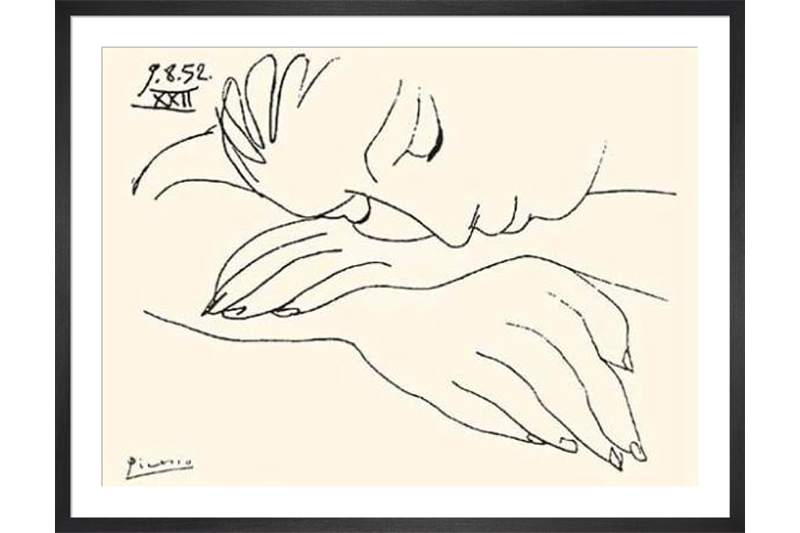Interiors 101: Framing & Mounting
MOUNTING
What are the options?
"There are many choices you can make with bespoke picture mounts. The most common are 'window mounts’, ‘float mounts’ and ‘shadow float mounts’. The best option will be determined by what you are having framed and how you would like it to look in the frame. You may not even wish to have a mount visible – it’s called ‘close framed’ when the picture or object comes right up to the inside edge of the frame.” – Anna Kirrage, art advisor
“There are three methods I typically suggest: ‘over mounting’ or ‘window mounting’ means the mount covers the edges of the artwork; ‘float mounting’ lets the artwork sit on top of the mount; while ‘raised float mounting’ is where the artwork sits on top of a board and floats above the mount.” – Hettie Reatchlous, Art Untamed
How wide should the mounting be?
“This depends on personal preference. A larger mount can work well if you want to let the artwork breathe by giving it more space – or I love giving miniature works of art a large mount to give them presence. You can also frame things right to the edge, which I think can look great with large format photos, for example. You need to be careful not to encroach on the work too much with your window mount as you don't want to crop off important details of the piece. Most window mounts will crop off a few mm of an artwork, so it's best not to window mount something where the signature is very close to the edge of the paper as you might risk cutting some of this off, which might devalue the work. If you opt for a float mount, you might want to leave a bit less space so as not to swamp the work – I find that 3-5cm can work well.” – Georgia Spray, Partnership Editions
“A good framer will take the time to mock up different options for you when you take your piece to them.” – Anna
What are the most popular colours?
“Most people tend to stick to whites or neutrals but I think you can have a lot of fun with colour. Pick a colour from the picture you are framing – using that as your mount colour can really make your painting pop.” – Anna
“A simple off white is the most popular colour for a window mount, but there are so many different types of white, so make sure to hold the options up to your artwork when you are choosing the mount to see how it matches the colours in the work. There are often tones of white within an artwork; if they clash with the mount, the mount can feel overly cool and blue or too warm and yellow, throwing off the colours within the work.” – Georgia
Can a coloured mount detract from the work?
“A coloured mount can work really well depending on the effect you're going for. I love window mounting a work and making the frame, the spacer (the inside profile of the frame that creates a box effect) and the mount to be matching in a darker colour that you can find in the work. This makes the brighter colours within the piece really pop – try and dark green or a navy blue for this. You can also go for colours such as pinks, sandy or corals to create a softer ‘romantic’ effect on works such as portraits.” – Georgia
“Sometimes a coloured mount can wash out certain colours in the artwork and look too strong. I love going for a linen mount as it adds a bit of texture without overpowering it.” – Hettie
Do you need to factor in the colour of the wall the picture will hang on?
“This depends. Very often moving works around and changing location can breathe new life into a room, so I wouldn't usually take into the account the wall it is hanging on. However, if a piece is going to stay in the same spot and is destined for a specific wall, then it should definitely be considered. For example, if the wall has very decorative wallpaper, I would usually go for a simple mount, but if the wall is very stark and white, it might be fun to use a coloured mount or a black mount (depending on the artwork of course).” – Hettie
“Gone are the days of magnolia walls, so taking into account the interior scheme and wall colour can be crucial when choosing how to mount your artwork.” – Anna
Where are the best places to buy mounts?
“From your local framer, so you can check the colour against the artwork in person. If you are looking for something particularly cost effective, then Etsy is worthwhile as there are often some great options.” – Hettie
“If you're not getting your work professionally framed then you can buy quite a good range of mounts via EFrame.co.uk .” – Georgia
FRAMING
What are the basic rules of framing then?
“Good-quality framing is not always cheap. Make sure you go to the best framer you can afford. It’s easy to want to cut costs when framing a piece of art if you’ve already spent a lot of money, but the quality of the frame will determine how well your piece is preserved over time. My pet peeve is when frames crack at the corners, but this won’t happen if the frame is well made. Always make sure the framer uses conservation-grade materials which are acid free. This will ensure your artwork doesn’t deteriorate or discolour over time.” – Anna
“Spend on framing. It can be expensive, but in my opinion it is worth every penny. A bad frame can ruin the piece. Don't cut corners with poor-quality frames; they often break in time and you have to pay twice. A handmade frame from a framer makes all the difference and the options are endless.” – Hettie
What should you think about when partnering frames and mounts?
“It's quite easy to get carried away and have too much going on with both mount and frame. I personally think you should let the artwork lead and try not to have the frame and mount detract from the work.” – Georgia
“When using an antique or ornate frame, use a simple mount/slip to balance it out. Don't overcomplicate it and try not to use clashing colours. Make sure the mount and frame complement each other (which a framer can help you with). Sometimes the simpler the better.” - Hettie
Where can you find good frames on the high street?
“Habitat, Ikea and John Lewis.” – Hettie
“Nielsen does a decent frame. Its Alpha range is the best quality and uses anti-reflective glass. For something more playful, Zara Home has some nice natural wood ones.” – Georgia
What should you look for in antique frames?
“With antique frames you are buying an artwork in itself. To be classed as an antique, it must be at least one century old, but don’t assume antique picture frames will fall apart any time soon. After decades of use, these well-built frames are still going strong and will lend real character to your walls and art works. It is best to buy only from trusted and reputable antique stores, but if you fall in love with one that needs repairing, a good framer can help you restore it to its former glory.” – Anna
“It's quite easy to get glass cut to replace inside an antique frame, so just focus on the frame and back being in good condition.” – Georgia
Where can you buy them?
“My go-to places include Lacy Gallery in Notting Hill or Sunbury Antiques Market at Kempton.” – Hettie
“Vinterior has a good selection, but for real quality go to Paul Mitchell.” – Anna
“Try looking on eBay and in markets and charity shops. They often have old artworks in them which can be removed and then you can put your own work in them.” – Georgia
GLASS
What are the options?
“The two options are glass or acrylic, which is known as plexiglass. Glass is less expensive than acrylic, doesn’t have the kind of static charge that can attract dust, and is more scratch-resistant. However, glass also has its disadvantages. The cheaper kinds tend to have a noticeable green or blue tint, while acrylic is optically pure. Glass is also much heavier in weight, harder to handle and more fragile than acrylic. Make sure you ask for acrylic glaze with a UV filter. UV rays will cause fading over time, so this option ensures the contents of the frame remain in pristine condition. Both sunlight and indoor lights emit UV rays that can cause artwork to deteriorate. Select this type of glaze if you're framing precious artwork, light-sensitive art (like watercolours or works on paper) or if you have plans to hang your frame somewhere with a lot of direct sunlight.” – Anna
“Plexiglass is a lot lighter so it's easier to transport works around. It can be a good option for large oversized art as it also means it will be less likely to fall off a wall!” – Hettie
“There’s also museum glass which is a clarity, reflection-control glass (sometimes referred to as ‘art glass’). You can get varying levels of non-reflection and UV protection that will get pricier the more UV they cut out.” - Georgia
Should you always use UV glass?
“If the work will be hung in front of some windows or in a place with a lot of natural light, then definitely yes. If the picture will be in a moderately dark space, it's not absolutely necessary.” – Hettie
“Unless you hang a piece in a room with no natural light, I would always recommend using a glaze with a UV filter. There are some exceptions such as oil paintings and acrylic paintings which are resilient and typically can withstand sunlight. However, I would always err on the side of caution, especially if a piece is hung in a sunny room.” - Anna
HERE'S HOW HETTIE WOULD FRAME AND MOUNT
…A Nostalgic Print
Take two colours from within the artwork itself. Use one for the mount colour and one for the frame. However, you can break this up with a neutral mount in between (so the piece is double mounted).
Available on KingAndMacGaw.com
…An Oil Still Life
I think there are three options: float mounted in a tray frame with a linen mount and a stained brown oak frame; with a linen over-mount and an antique frame; or with a gold slip to make it pop and a decorative frame.
Available on MetMuseum.org
…An abstract
I’d go for a white tray frame or have it floating in a box frame.
Available on KingAnd MacGaw.com
…A Simple Line Drawing
I would have this floating in a coloured tray frame to add some depth and drama to the work, or float mounted in a simple frame that matches the colour of the line drawing.
Available on KingAndMacGaw.com
DISCLAIMER: We endeavour to always credit the correct original source of every image we use. If you think a credit may be incorrect, please contact us at info@sheerluxe.com.

